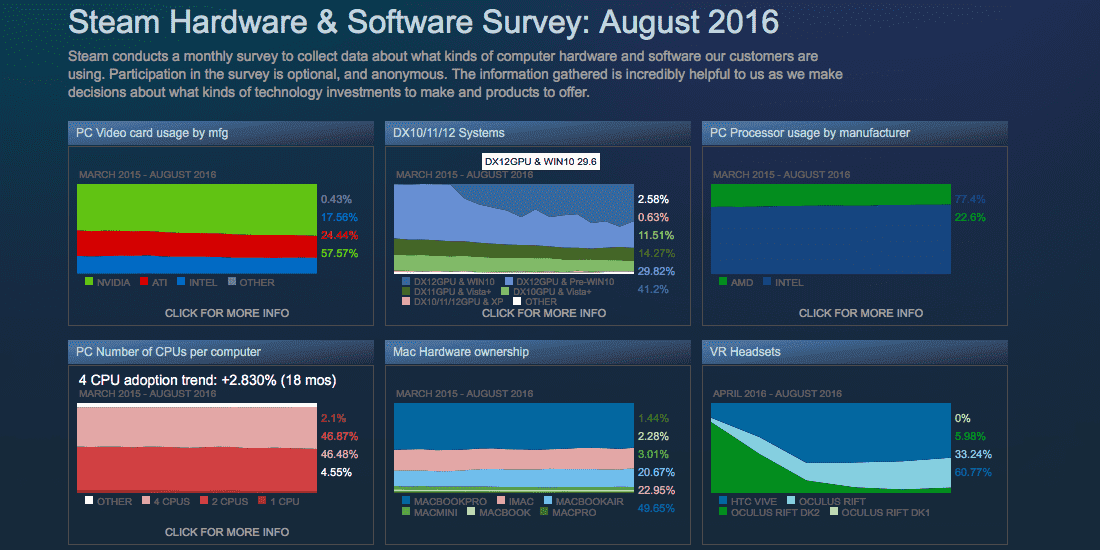Gamers overseas have been enjoying the chance to get onto the early adopter train for Virtual Reality. Whilst Singapore is still waiting for the release of any major headset, both the HTC Vive and Oculus Rift have been available for months now. However, not everything is sunshine and rainbows for the new technology. Valve has released marketing data which suggests that VR is dying off slowly.
What do the numbers mean?
image courtesy: store.steampowered.com
Valve regularly publishes their hardware and software surveys pulled from steam. Among the information is the news that early adoption of VR headsets has stopped growing. Literally in the case of the HTC Vive, which showed no increase in users over the month of August. This means that absolutely no-one bought and used a Vive in the last month. Oculus Rift did slightly better, with an increase of about 0.1% last month. Surprisingly, the Oculus Rift DK2 also showed some increase in users. This might be down to a heavily delayed delivery.

image courtesy: pcgamer.com
This means that combining both the Oculus Rift and the HTC Vive, there are still very few users with VR headset. Valve’s numbers say that 0.28% of all Steam users have a VR headset. HTC Vive is still the most popular headset with a 60% share in users, but still a very low percentage. The Know, the gaming news portion of internet entertainment company RoosterTeeth, have estimated this number to translate to just over 300,000 active VR users. More importantly, the drop in adoption coincides with the first time that both headsets have been made widely available to the public. Before this, most sales were for preorders.

For how long, though? Image courtesy: roadtovr.com
Of course, there are some caveats to this news. Valve only has access to optional information, and only through steam. Oculus has its own store and so the true number could be higher. Furthermore, the release of the PlayStation VR headset could be what pushes VR adoption rate up again. After all, the high price point is a significant factor against gamers buying the headsets. It is also worth mentioning that this does not include mobile-based VR headsets in their calculations.
Nevertheless, this could be a potential concern for investors and for users who have not had a chance to get their hands on the product yet. Vendors might be less willing to stock VR headsets in Singapore if there is no guarantee that they will sell.
Sources: store.steampowered.com, The Know







